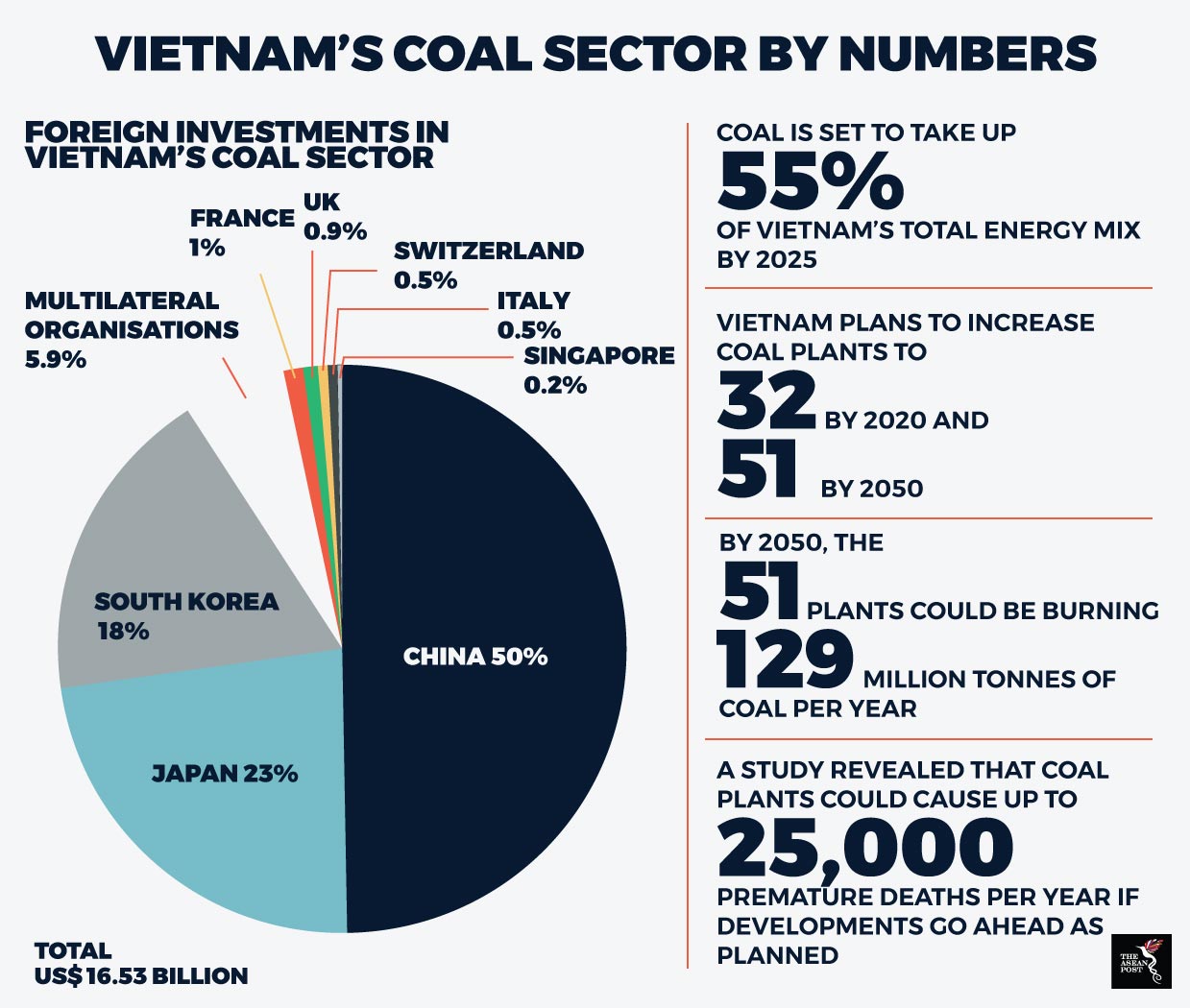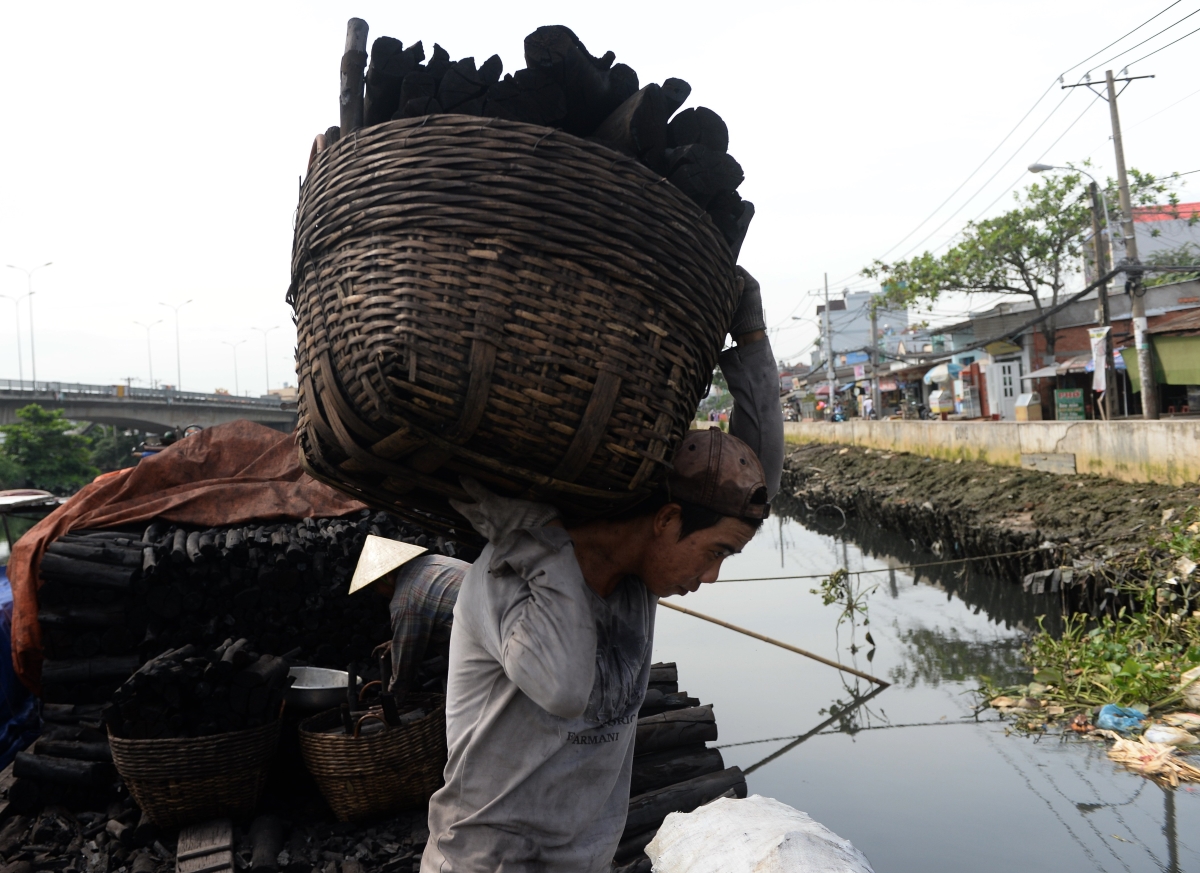With a rapidly growing economy, Vietnam is facing an increase in energy demand. According to Vietnamese power company, Electricity of Vietnam, energy demand in the country is forecasted to grow 10% annually. Accounting for a significant chunk of the demand for energy is the demand for electricity. The Vietnam Energy Outlook Report 2017 released by the Vietnamese government in collaboration with the Danish Energy Agency, states that electricity demand is expected to grow 8% annually until 2035.
With an increase in energy demand forecasted, it is vital that Vietnam consolidates its energy sectors to generate more power. At the moment, Vietnam is looking to expand its coal sector to meet the growing energy demand.
Currently, the use of coal in the region is quite substantial. From 2000 to 2015, the biomass and hydro share of the total primary energy supply in Vietnam dropped to 24 percent from 53 percent while coal share grew from 14 percent to 35 percent of the total supply. Vietnam already has more than 20 coal-fired power plants with a total capacity of over 13,000 megawatts (MW). Furthermore, data from S&P Global Platts, a provider of energy and commodities information shows that Vietnam’s coal imports in April this year hit a record of 2.25 million tonnes, up 132.5 percent year on year.

Sources: Various sources
These numbers might already seem staggering but Vietnam’s coal usage in the future would most likely be significantly higher.
The Vietnamese media reported at the start of the year that the government’s power development plan will see the rise of coal power to 49% of Vietnam’s total energy mix by 2020 and 55 percent by 2025. There are also reports that Vietnam is planning to increase the number of coal-fired plants in the country. According to the plan, Vietnam will increase the number of coal-fired plants to 32 by 2020 and 51 by 2030. If that goes through, the 32 coal-fired plants in 2020 will be burning 63 million tons of coal per year. 129 million tons of coal per year will be burning by the time all 51 plants are operational.
While Vietnam looks to develop its coal sector, more and more countries are starting to ditch coal and move to greener or less-damaging resources such as natural gas or renewables such as solar power and wind.
The attractiveness of coal to Vietnam is probably due to its affordability. However, Vietnam has been facing a backlash for its plans to increase the use of coal in the country. In the summer of 2016, World Bank president, Jim Yong Kim rebuked Vietnam for their coal plans. “If Vietnam goes forward with 40GW of coal, if the entire region implements their coal-based plans right now, I think we are finished,” said Jim Yong Kim.
Most, if not all the concerns surrounding Vietnam’s increased dependence on coal are environmental in nature. A recent study by Harvard University and Greenpeace revealed that existing coal plants cause an estimated 4,300 premature deaths every year. The number could rise up to 25,000 premature deaths per year. This is preventable if Vietnam refocuses its sights on renewable and sustainable energy.
Vietnam has already included a renewable energy development strategy into its energy plans. In fact, Vietnam is actually making great strides in developing its hydropower, solar, and wind capacity. Despite that, coal remains a priority for the state. As long as coal is cheaper compared to other sources of energy, it will remain the number one choice. It also doesn’t help that foreign investors are making huge investments in the country’s coal sector. Last year, total foreign investment into coal projects in Vietnam was around US$20.5 billion.
If Vietnam is serious in its pledge to reduce carbon emissions to 8 percent by 2030, it needs to rethink its coal plans for the future. The country needs to realise that it already has great potential for renewable energy. A 2017 report by WWF Vietnam and Vietnam Sustainable Energy Alliance highlighted that 100 percent of Vietnam’s power could be generated by renewable energy by 2050. With a growing economy, Vietnam has to invest in sustainability. The country can lead the way in showing that economic growth and sustainability can go hand in hand.
